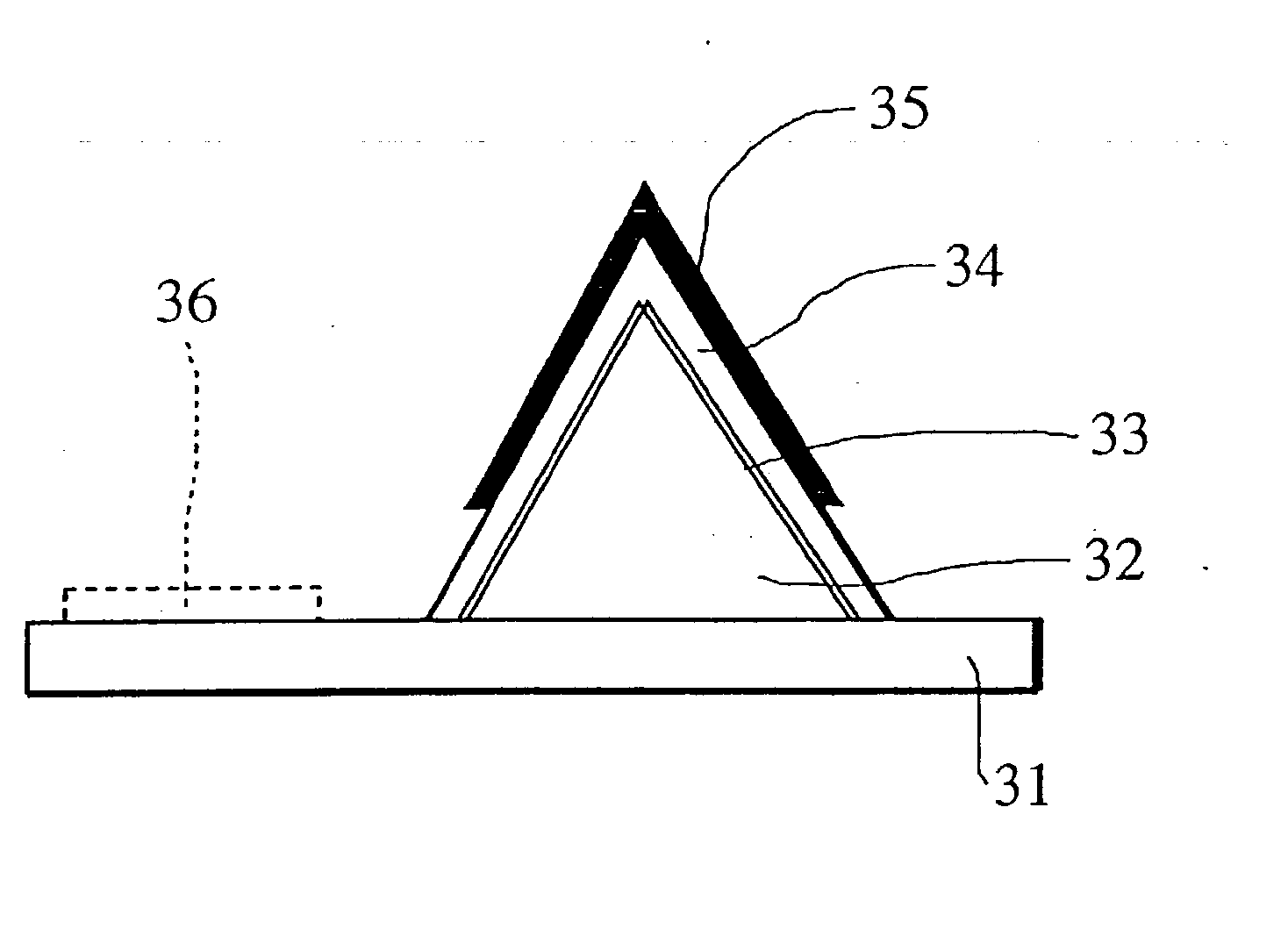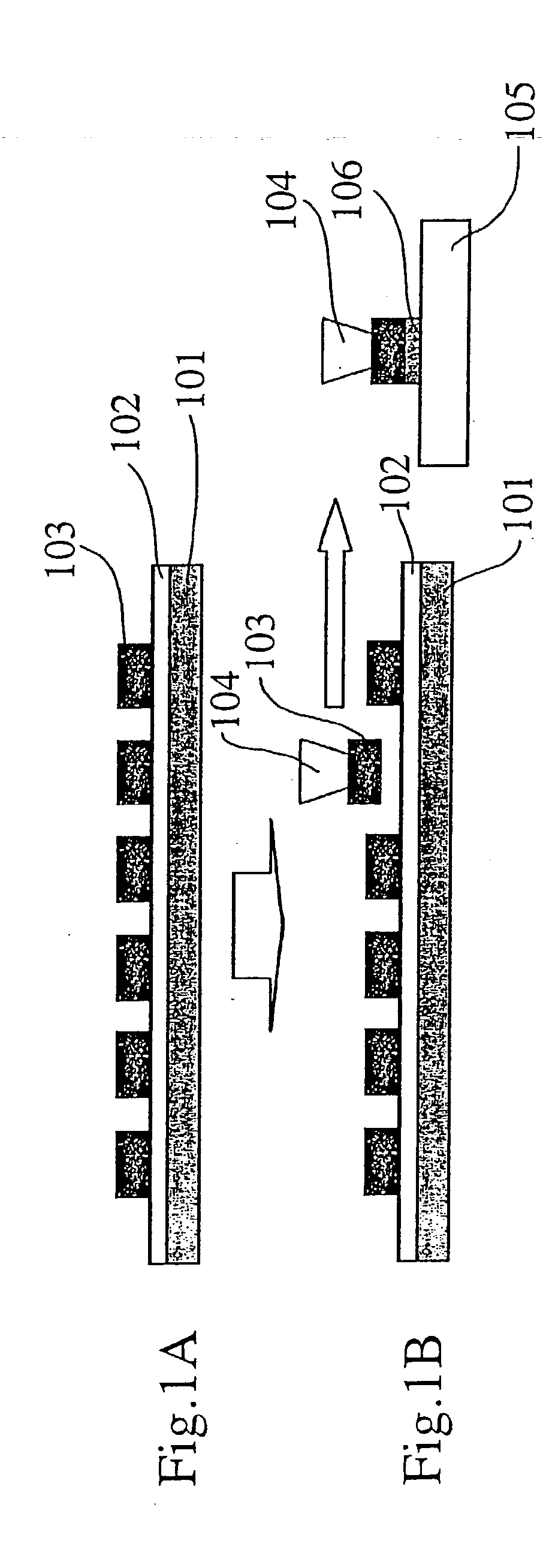Element transfer method, element arrangmenet method using the same, and image display
a transfer method and element technology, applied in the manufacture of electrode systems, electric discharge tubes/lamps, instruments, etc., can solve the problems of difficult to heat only the desired parts, positional deviation and peeling of other parts, and complicated work, so as to improve the fabrication yield of the image display unit, reduce the number of transfer, and reduce the effect of the number of transfer
- Summary
- Abstract
- Description
- Claims
- Application Information
AI Technical Summary
Benefits of technology
Problems solved by technology
Method used
Image
Examples
second embodiment
[0175] [Second Embodiment]
[0176] The second embodiment, which carries out each of the device transferring method, the device arraying method, and the image display unit fabricating method according to the present invention, will be described below. In this embodiment, parts corresponding to those described in the first embodiment are denoted by the same reference numerals and therefore the detailed description thereof is omitted.
[0177] [Device Transferring Method According to Second Embodiment]
[0178] The second embodiment is characterized in that an adhesive layer equivalent to the adhesive layer 7 according to the first embodiment contains a light absorbing material for increasing a light absorptivity of the adhesive layer against laser beams.
[0179] The light absorbing material for increasing a light absorptivity of the adhesive layer may be disposed in the vicinity of the adhesive layer. As such a light absorbing material contained in the adhesive layer or disposed in the vicinity...
third embodiment
[0201] [Third Embodiment]
[0202] The third embodiment, which carries out each of the device transferring method, the device arraying method, and the image display unit fabricating method according to the present invention, will be described below. In this embodiment, parts corresponding to those described in the first and second embodiments are denoted by the same reference numerals and therefore the detailed description thereof is omitted.
[0203] [Device Transferring Method According to Third Embodiment]
[0204] A device transferring method according to the third embodiment will be first described. To transfer devices 3 in accordance with the device transferring method of the present invention, as shown in FIG. 18(a), a thermal re-peelable layer 81 is formed on a base substrate 1 as a supply source, and a plurality of devices are formed in array on the base substrate 1.
[0205] The thermal re-peelable layer 81 has a property that the sticky force thereof is reduced when the layer 81 is h...
PUM
| Property | Measurement | Unit |
|---|---|---|
| size | aaaaa | aaaaa |
| size | aaaaa | aaaaa |
| thickness | aaaaa | aaaaa |
Abstract
Description
Claims
Application Information
 Login to View More
Login to View More - R&D
- Intellectual Property
- Life Sciences
- Materials
- Tech Scout
- Unparalleled Data Quality
- Higher Quality Content
- 60% Fewer Hallucinations
Browse by: Latest US Patents, China's latest patents, Technical Efficacy Thesaurus, Application Domain, Technology Topic, Popular Technical Reports.
© 2025 PatSnap. All rights reserved.Legal|Privacy policy|Modern Slavery Act Transparency Statement|Sitemap|About US| Contact US: help@patsnap.com



